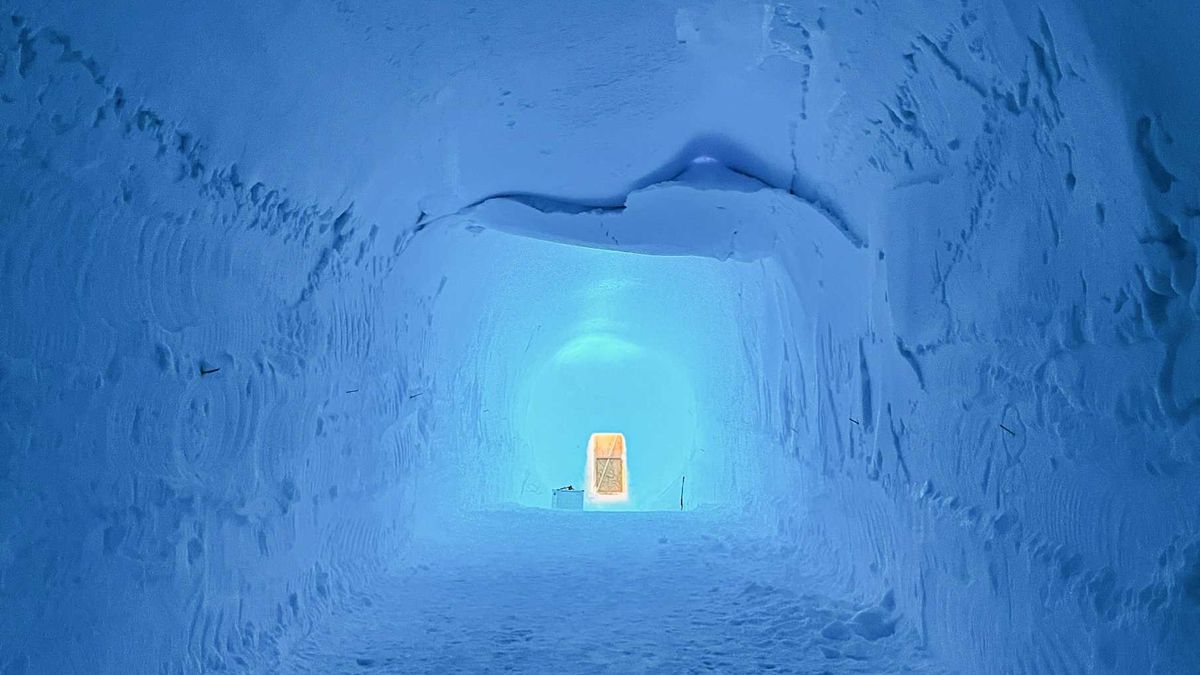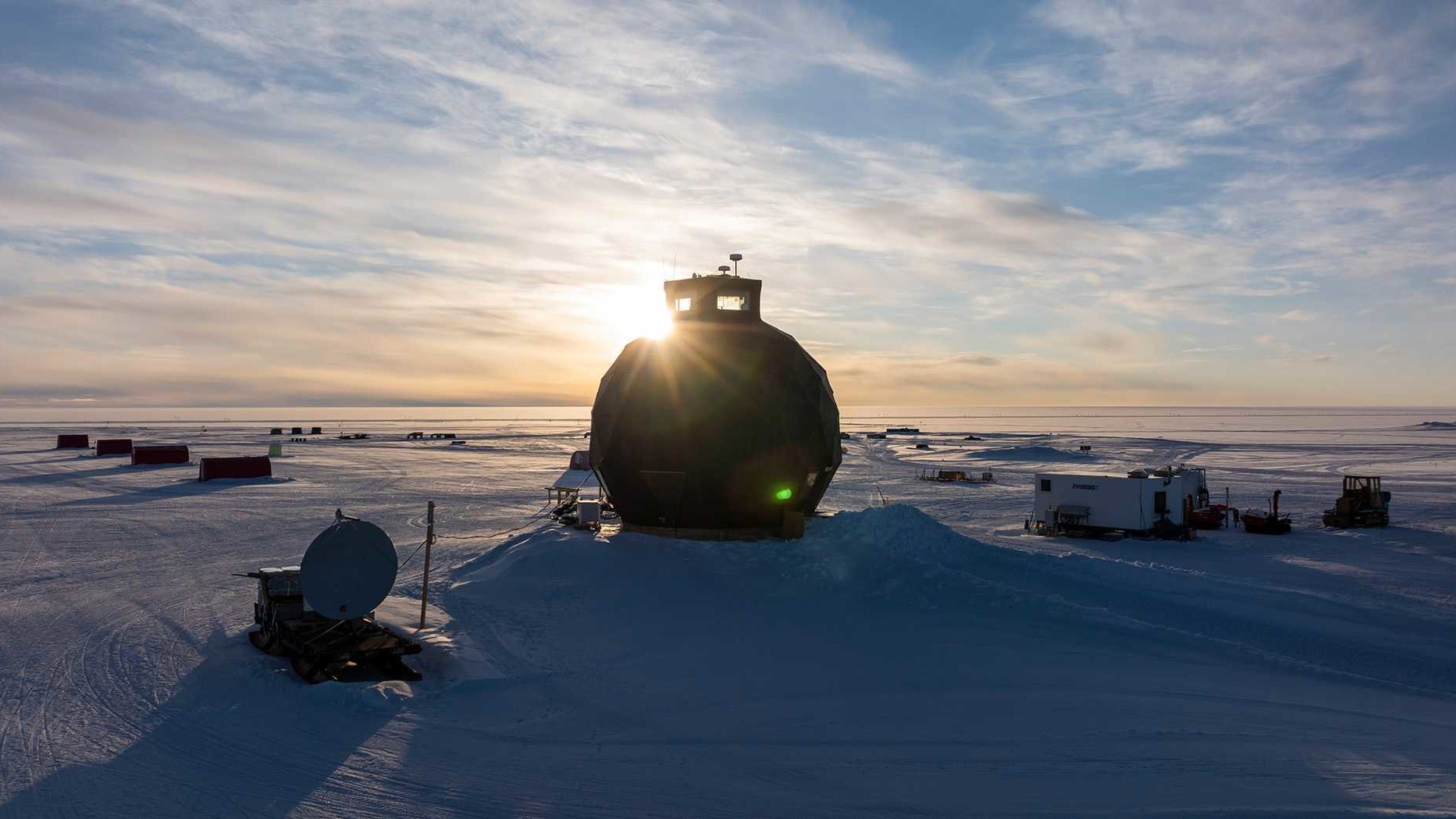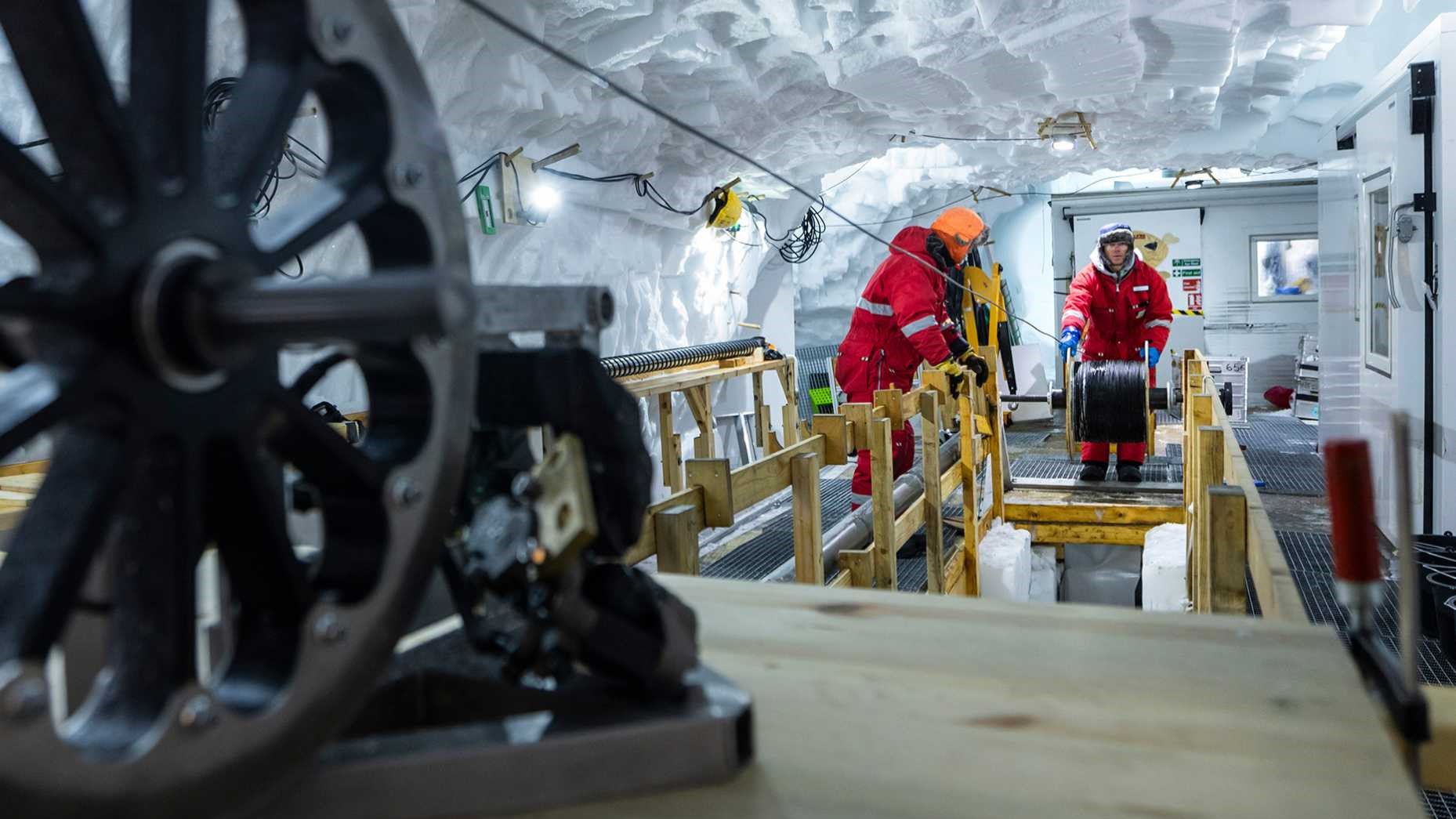
In an unprecedented discovery, scientists have documented numerous “ice quakes” that intermittently disrupt the Greenland Ice Sheet. These seismic events may provide insight into the erratic movement of the island’s frozen rivers as they flow toward the ocean, according to the researchers.
To capture these ice quakes, the team utilized a fiber-optic cable lowered into a deep borehole measuring 1.7 miles (2.7 kilometers) in Northeast Greenland Ice Stream — the largest of Greenland’s frozen rivers that acts as the primary conduit for ice being released from the ice sheet’s core into the North Atlantic.
Similar to earthquakes, ice quakes are seismic phenomena that occur when ice fractures and two sections slide against one another.
Previously unrecognized, these ice quakes in Greenland have remained undetected due to a covering of volcanic particles located around 2,950 feet (900 meters) beneath the ice, as noted by the researchers in a press release. These particles trace back to a significant eruption of Mount Mazama in present-day Oregon approximately 7,700 years ago.
Related: Greenland’s ice sheet — the second-largest globally — is rapidly fracturing, scientists reveal
The volcanic particles not only impede seismic waves from reaching the surface but may also be a direct cause of the quakes. Andreas Fichtner, a geophysics professor at the Swiss Federal Institute of Technology (ETH) in Zurich and lead author of a recent study published on February 6 in the journal Science, stated that the ice quakes likely originate from impurities in the ice, such as sulfates and other particles that can destabilize the ice and result in small fissures.
“We were surprised to uncover this previously unknown connection between ice stream dynamics and volcanic activity,” Fichtner remarked.

Ice quakes can instigate additional ice quakes like a domino effect, spreading horizontally over considerable distances, as reported in the statement.
Reassessing Ice Stream Movement
Scientists are keenly investigating ice streams — and the influence of ice quakes on how these streams transport ice — since they transfer substantial amounts of ice from glaciers into the ocean, contributing to rising sea levels. Misunderstandings about the mechanisms behind ice streams lead to inaccuracies in modeling that assists researchers in predicting the long-term effects of climate change.
Historically, scientists believed that ice merely flowed slowly through these rivers, akin to thick syrup. However, this new discovery, among other findings, has compelled researchers to rethink the dynamics of ice movement.

“The assumption that ice streams only flow like viscous honey is no longer valid,” Fichtner observed.
New data confirms that tiny quakes occurring deep within the Greenland Ice Sheet contribute to the movement of ice streams through a “stick-slip” motion, Fichtner added.
The Greenland Ice Sheet is the largest in the Northern Hemisphere, covering about 80% of the land area of Greenland. Meltwater from the ice sheet is currently the most significant contributor to global sea level rise, responsible for a 0.6-inch (1 centimeter) increase since the 1990s. Scientists believe there is enough ice locked within Greenland that could raise sea levels by 23 feet (7 meters).
“Discovering these ice quakes marks a crucial advancement toward a deeper understanding of ice stream deformation on small scales,” stated Olaf Eisen, a glaciology professor at the Alfred Wegener Institute for Polar and Marine Research in Germany, as indicated in the press release.









